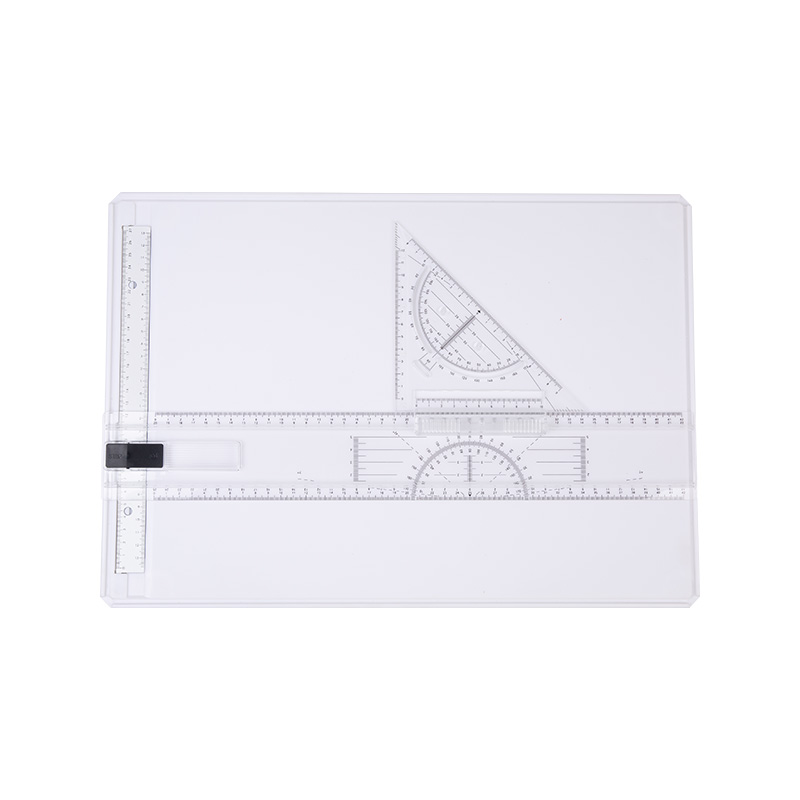The durability of the surface of an A3 drawing board and its resistance to scratches and stains depend on the material and construction quality of the board. Here are some factors to consider:
Material Selection: The material of an A3 drawing board is pivotal in determining its durability against scratches and stains. Tempered glass surfaces are highly favored for their exceptional durability and scratch resistance. Tempered glass undergoes a specialized heating and rapid cooling process that strengthens its molecular structure, making it up to five times stronger than regular glass. This inherent toughness makes tempered glass drawing boards resilient to scratches from drawing tools like pencils and erasers, as well as resistant to stains from ink and markers. Hard plastic boards, while generally durable, vary widely in scratch resistance based on the quality and thickness of the plastic used. Higher-quality plastics or composite materials reinforced with fibers can offer enhanced scratch resistance compared to thinner, less durable plastics. However, they may still be susceptible to deep scratches from sharp tools or heavy pressure. Coated wood boards provide a more traditional drawing surface and can offer good durability with proper care. The effectiveness of their scratch resistance largely depends on the quality and type of coating applied. Some coatings provide a smooth, protective layer that resists scratches and stains, while others may require more frequent maintenance to preserve their integrity.
Protective Coating: Many A3 drawing boards feature a protective coating designed to enhance durability and resist scratches and stains. This coating is typically applied over the underlying material—whether glass, plastic, or wood—to provide an additional layer of protection. The effectiveness of the coating can vary significantly depending on its composition and application method. High-quality protective coatings are engineered to withstand the abrasion caused by frequent drawing and erasing. They create a smooth, non-porous surface that prevents ink and marker stains from penetrating into the board's material. Some coatings also incorporate anti-static properties to reduce dust buildup, which can contribute to scratches over time. When selecting an A3 drawing board, it's advisable to look for boards with a proven track record of durable coatings. User reviews and professional recommendations can offer valuable insights into the longevity and effectiveness of the protective coating in real-world applications.
Maintenance and Cleaning: Proper maintenance practices are essential for preserving the durability and appearance of an A3 drawing board's surface. Regular cleaning with gentle, non-abrasive cleaning agents specifically formulated for the board's material helps remove dust, smudges, and potential stains without compromising the protective coating. For tempered glass boards, a soft microfiber cloth and a mild glass cleaner are typically recommended to maintain clarity and scratch resistance. Avoiding harsh chemicals and abrasive cleaners is crucial, as they can scratch the surface or degrade the protective coating over time. Plastic and wood boards may require different cleaning approaches based on their specific coatings and finishes. Manufacturers often provide guidelines for cleaning and maintaining their products to ensure long-term durability and optimal performance.
Usage Considerations: The intended use of the drawing board influences its durability requirements. Professional artists, architects, and designers who use their drawing boards extensively throughout the day require models that can withstand intensive use without compromising performance. High durability ensures that the board remains reliable and visually appealing, even after repeated use with sharp drawing tools and markers. Educational settings, where drawing boards may be used by multiple students, also benefit from durable construction that withstands handling and occasional misuse. Hobbyists and occasional users may prioritize affordability alongside adequate scratch resistance and ease of maintenance.




 English
English Español
Español
















